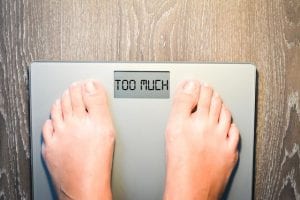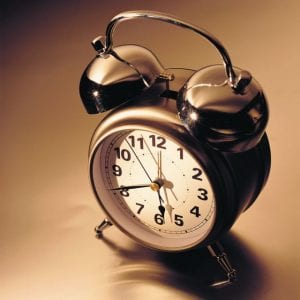
Adolescence is a time when young people begin to care greatly about their appearance—how they see themselves and how others see them. They begin to question their appearance—will it help or hinder social and romantic relationships? These thoughts lead to questions of “Am I too _______?”, “I am not _______.”, or “I wish I was _______!”
Although this is not a new phenomenon, the modern adolescent has to contend with the bombardment of media in everyday life. Media is now woven through the tapestry of adolescence. Countless media sources send messages about body image, and much attention has been given to media, in all of its forms, for promoting the idea that “thin is beautiful” or that you have to “look a certain way” to be popular, smart, or get a date.
The most important message: The media’s job is to promote perfection by using images as a barometer. Their job is to create a perfect person, which does not exist, so that an advertiser’s product will be purchased by a consumer who hopes to transform themselves into a perfect person. The media is an illusion and should be viewed through the lens of the fantasy it was hired by advertisers to create.
Now that we’ve gotten that out of the way……………… the rest of the message comes by understanding puberty and some of the effects not talked about in standard family life classes.
Body dissatisfaction and the ill effects it can produce have the most negative impact on young girls as they enter puberty. In fact, “Only about one fourth (26.7%) of American adolescents are highly satisfied with their body.”[1] That means three out of every four (73.3%) adolescent girls you meet is at risk for some sort of unhealthy habit, thought, or pattern surrounding their body and this usually translates into unhealthy food and eating habits.
Although less than 1% of female adolescents are anorexic and only about 4% bulimic, these are just the reported statistics. I can say that I attended a middle school filled with closet bingeing and purging and it is unlikely they would have admitted the behavior. It was even an accepted practice in many movies of my middle school and early high school generation. Of course, I’m showing my age in that respect, but from what I see on my own social media and the social media of those teens I do know—body image is still a hot topic. A topic still misunderstood, still unhealthy, and still needing serious conversations. Mixed messages sent by the media, parents, peers, and other role models can lead to a lifelong unhealthy relationship with food at best and body dysmorphia at worst.
It’s important to talk to adolescents about healthy food choices and exercise, not “controlling” weight (or image). Openly discuss issues surrounding body dissatisfaction and don’t discount concerns as adolescent angst, irrational comments, dramatic play, or comparison syndrome. The thoughts and feelings adolescents have about their body, especially in middle school, are seared into their fiber and become a part of who they will become as an adult—good, bad, or indifferent.

My son, as a newborn, was the sleeping envy of all new mothers—this was because he slept. As a toddler, there were no bedtime showdowns. Even through the different stages of elementary school, he went to bed at night and awoke in the morning without protest. But something happened to this child shortly after his eleventh birthday; he seemed to have acquired an inability to get out of the bed in the mornings for school.
As this pattern emerged, the morning family routine became increasingly dysfunctional. There were arguments, hurt feelings, and lots of breakfasts crammed in at the bus stop. By week three of school, I began to worry. Not only had he started middle school, but he started a new middle school—far away from home and with kids he had never met. I wondered if I had made the wrong choice—if this were just a silent protest to his new situation. I talked to him, I listened to him, I interrogated him, and……I believed him—it wasn’t school.
His side of the story: He’s tired, he tries to get out of bed, and there is no understanding on the part of his stepfather how tired he is. He simply can’t get out of bed—his body won’t let him.
My side of the story: If you are tired go to bed earlier, I’m tired too, and I do understand—I understand that getting out of bed is essential to making it to school on time. I get out of bed, my body lets me, and I’m old.
Clearly, we were at a sleep-wake impasse. Then, I came across some interesting research related to puberty and changes in patterns of sleep. I read about something called delayed phase preference (DPP), a sleep pattern characterized by later sleep-wake times.
Here’s what I learned:
- DPP is driven by the biological changes of puberty,
- Melatonin plays a sizable role in DPP,
- Environmental factors contribute to DPP,
- Adolescents are most alert after 3pm and least alert between 8am–9am,
- Different sleep-wake times on weekends vs. weekdays makes the problem worse, and
- DPP usually begins to reverse around age twenty.
It is well know that melatonin plays a considerable role in our sleep-wake pattern. When melatonin levels rise (usually in the evenings), we feel sleepier, and when melatonin levels fall (usually in the mornings), we feel more awake. But the secretion of melatonin means something more for adolescents. The secretion of melatonin plays a role (along with kisspeptin and other hormones) in triggering puberty.
During puberty, the time of night the body releases melatonin changes. As physical maturation progresses, the changes become later and later. In fact, for those adolescents who have completed puberty, the body releases melatonin an average of two hours later than for those who have not yet completed puberty—resulting in the need to stay awake up to two hours later than those who have not yet, or have just started, puberty.
This holistic shift in the melatonin release cycle is fascinating, but unfortunately, the combination of biologically-induced late sleep times and rigid early school wake times cause problems for adolescents—namely sleep deprivation and daytime sleepiness. Sleep deprivation and daytime sleepiness can cause cognitive impairment, poor school performance, poor self-control, obesity, accidents, and even depression, just to name a few. Compounding this problem—the amount of sleep an adolescent requires is still around nine hours a night.
DPP explained exactly what had begun to happen with my usually-easy-sleeping and early-rising child. As I reflected, there was a pattern emerging, of not only difficulty in waking but also a preference for keeping later hours in the evening. Once I understood it was driven by biological factors and not the beginnings of the argumentative stage of boundary-testing autonomy, I began to make adjustments.
1. The family routine became priority number one. Sticking to roughly the same sleep-wake cycle every day—even on weekends. Even on those evenings when sleep is elusive, just lying in bed and “resting” your body is supportive.
2. We began preparing for the next morning the night before, allowing him to squeeze the last bit of sleep from the snooze button. Things such as packing book bags, sports bags, and lunches, as well as taking showers and laying out clothes for the next day.
3. When the sun goes down, the lights—and the devices—go off.
4. Occasionally supplementing melatonin is not out of the question.
All of these adjustments have been time—and sanity—savers. They have also helped honor this DPP biological time of life. Although I have no control over school start times, I can make easing into sleep and transitioning to morning easier for him, as these biological changes are just a part of growing up.
Welcome & thank you for joining me on my journey to becoming a classroom teacher! After 18 years, I am giving up the courtroom for the classroom and am excited to have you share in my journey. Here, I will post about various topics related to pedagogy, classroom teaching, and general topics in the education community. As a curator of resources and information, I hope you can find something useful for your own educational journey.
Happy reading!

